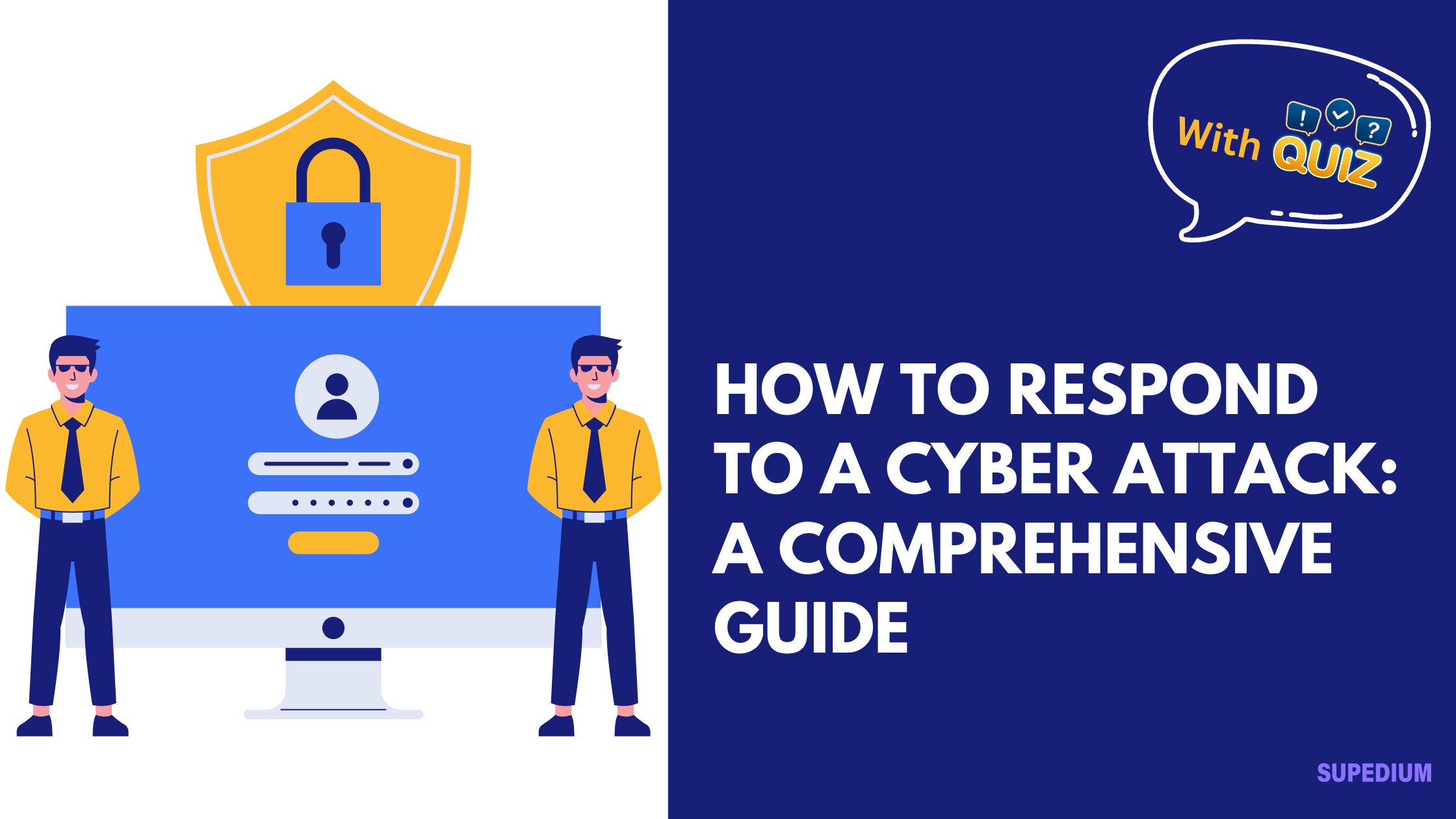Table of Contents
![]()
In today’s interconnected world, cyber attacks are an unfortunate reality that organizations of all sizes face. The impact of these attacks can be devastating, ranging from financial loss to reputational damage and operational disruption. An effective response is critical to minimizing harm and ensuring a swift recovery. This article provides a detailed guide on how to respond to a cyber attack, based on a structured approach.
Introduction
Definition of a Cyber Attack
A cyber attack refers to any attempt by unauthorized individuals or entities to access, disrupt, or damage digital systems and data. Common types of cyber attacks include malware infections, phishing scams, ransomware attacks, and denial-of-service (DoS) attacks. Each type exploits different vulnerabilities and requires specific response strategies.
Importance of a Response Plan
Having a well-defined response plan is essential for several reasons. It helps minimize damage, ensures business continuity, and protects sensitive information. A structured response can also prevent future attacks by addressing the vulnerabilities exploited in the current incident.
Immediate Response
Detection and Identification
Recognizing the Attack: The first step in responding to a cyber attack is detection. Security software and intrusion detection systems often generate alerts when they identify suspicious activity. Additionally, unusual system behavior, such as slowed performance or unexpected file changes, can signal a breach.
Confirming the Attack: Once suspicious activity is detected, it’s crucial to verify whether an actual attack has occurred. This involves examining system logs, network traffic, and other indicators of compromise to confirm the nature and scope of the attack.
Containment
Isolate Affected Systems: To prevent the attack from spreading, isolate the compromised systems from the network. Disconnecting affected machines and segmenting the network can limit further damage and contain the threat.
Preserve Evidence: It’s essential to preserve evidence for later analysis. Create forensic copies of affected systems and document every detail of the attack, including the timeline, symptoms, and any actions taken. This information will be valuable for root cause analysis and legal proceedings.
Communication
Internal Notification: Inform key personnel within the organization, including IT staff, security teams, and relevant departments. Effective communication ensures that everyone is aware of the situation and can contribute to the response.
External Notification: Notify external stakeholders, such as customers, partners, and vendors, if their data or services are affected. Additionally, comply with legal and regulatory requirements by reporting the incident to appropriate authorities and data protection agencies.
Assessment and Analysis
Impact Assessment
Determine Affected Systems: Assess which systems and data have been compromised. This includes identifying the extent of the damage and understanding the impact on operations and sensitive information.
Evaluate Data Loss: Determine whether data has been lost, stolen, or altered. Assessing the severity of data loss is critical for understanding the full impact of the attack and informing subsequent recovery efforts.
Root Cause Analysis
Identify Entry Points: Investigate how the attack was initiated. Understanding the entry point helps in addressing vulnerabilities and preventing similar attacks in the future.
Analyze Attack Vector: Examine the method used in the attack, whether it’s phishing, exploit of a software vulnerability, or another vector. This analysis is crucial for identifying and addressing the underlying weaknesses.
Eradication
Remove the Threat
Eliminate Malicious Software: Use antivirus and anti-malware tools to remove any malicious software from affected systems. In some cases, manual removal of malicious files and scripts may be necessary.
Patch Vulnerabilities: Apply security patches and updates to address vulnerabilities exploited during the attack. Ensure that all systems are up-to-date with the latest security fixes.
Strengthen Security Posture
Update Security Policies: Review and revise security policies to address gaps revealed by the attack. This may include changes to access controls, authentication mechanisms, and data protection practices.
Enhance Network Security: Implement additional security measures such as improved firewalls, intrusion detection systems, and network segmentation to protect against future attacks.
Recovery
System Restoration
Restore from Backups: Reinstall clean versions of affected systems using verified backups. Ensure that backups are free from malware and intact before restoring them.
Validate System Integrity: Conduct thorough testing to ensure that restored systems are fully operational and secure. Verify that all systems are functioning correctly and have not been compromised.
Monitor Systems
Enhanced Monitoring: Increase monitoring of network activity to detect any signs of ongoing or new threats. Use advanced threat detection tools to identify and respond to suspicious behavior.
Behavioral Analysis: Watch for unusual behavior or anomalies in system performance that could indicate a recurring attack. Regular monitoring helps in early detection and response to potential threats.
Post-Incident Actions
Review and Learn
Conduct a Post-Mortem Analysis: Review the incident to understand what went well and what could be improved. Analyze the response process, identify strengths and weaknesses, and document lessons learned.
Update Response Plan: Revise the incident response plan based on insights gained from the attack. Update procedures, policies, and training programs to enhance preparedness for future incidents.
Communication and Reporting
Public Relations: Manage communications with the media and the public to address concerns and provide transparency. Effective public relations can help mitigate reputational damage and restore trust.
Regulatory Compliance: Ensure that all regulatory and legal reporting obligations are met. Prepare detailed reports for authorities and stakeholders as required by data protection laws and industry regulations.
Training and Awareness
Employee Training: Conduct regular training sessions to raise awareness about cyber threats and improve response skills. Simulate attacks to practice and refine incident response procedures.
Review Security Policies: Continuously update and reinforce security policies to address emerging threats. Regular reviews help ensure that security measures remain effective and up-to-date.
Conclusion
Importance of Preparedness
Responding to a cyber attack requires preparation and a well-defined plan. Proactive measures, such as regular updates, training, and monitoring, are essential for minimizing damage and ensuring a swift recovery.
Future Outlook
As cyber threats evolve, so must response strategies and technologies. Staying informed about emerging trends and continuously improving response capabilities will help organizations better protect themselves against future attacks.
By following these guidelines, organizations can effectively respond to cyber attacks, minimize their impact, and strengthen their overall security posture.






Be the first to comment